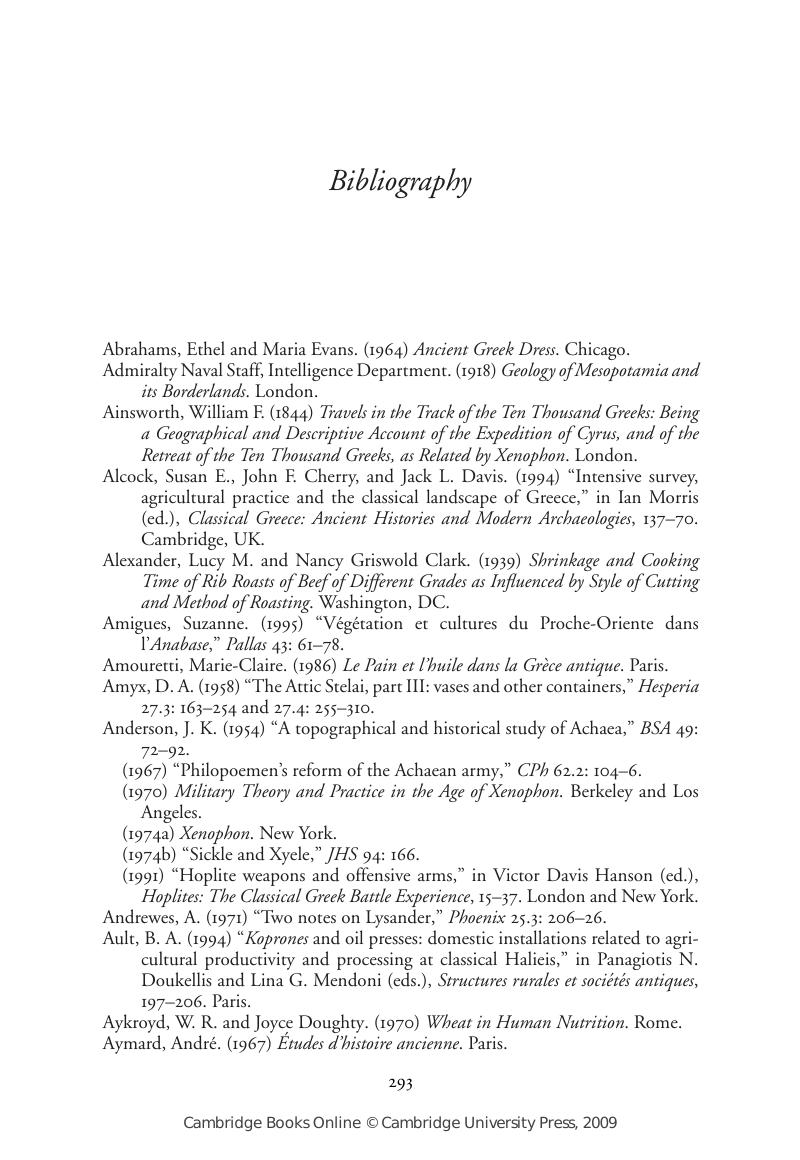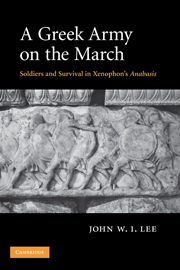Book contents
- Frontmatter
- Contents
- List of illustrations
- List of tables
- Preface
- Acknowledgments
- Abbreviations, transliterations, and other conventions
- Chapter 1 Introduction
- Chapter 2 The march route
- Chapter 3 The army
- Chapter 4 Unit organization and community
- Chapter 5 The things they carried
- Chapter 6 Marching
- Chapter 7 Resting
- Chapter 8 Eating and drinking
- Chapter 9 The soldier's body
- Chapter 10 Slaves, servants, and companions
- Chapter 11 Beyond the battlefield
- Tables
- Bibliography
- Index
- References
Bibliography
Published online by Cambridge University Press: 22 September 2009
- Frontmatter
- Contents
- List of illustrations
- List of tables
- Preface
- Acknowledgments
- Abbreviations, transliterations, and other conventions
- Chapter 1 Introduction
- Chapter 2 The march route
- Chapter 3 The army
- Chapter 4 Unit organization and community
- Chapter 5 The things they carried
- Chapter 6 Marching
- Chapter 7 Resting
- Chapter 8 Eating and drinking
- Chapter 9 The soldier's body
- Chapter 10 Slaves, servants, and companions
- Chapter 11 Beyond the battlefield
- Tables
- Bibliography
- Index
- References
Summary

- Type
- Chapter
- Information
- A Greek Army on the MarchSoldiers and Survival in Xenophon's Anabasis, pp. 293 - 317Publisher: Cambridge University PressPrint publication year: 2008



